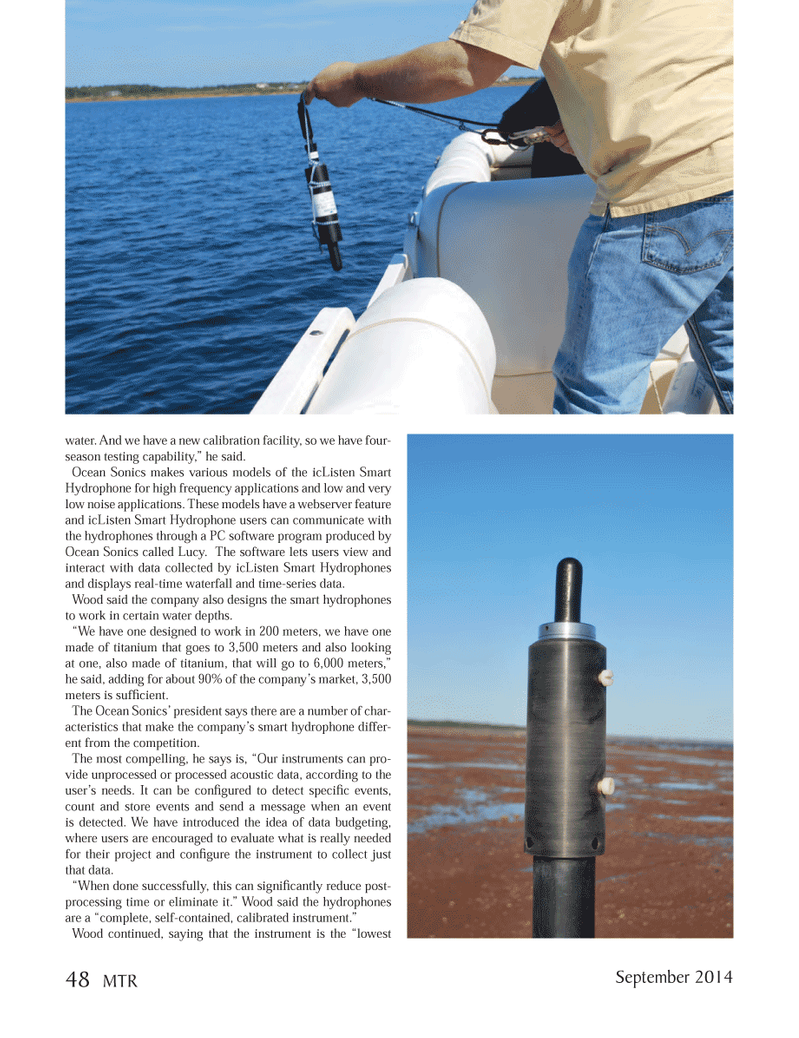
Page 48: of Marine Technology Magazine (September 2014)
Ocean Observation: Gliders, Buoys & Sub-Surface Networks
Read this page in Pdf, Flash or Html5 edition of September 2014 Marine Technology Magazine
water. And we have a new calibration facility, so we have four- season testing capability,” he said.
Ocean Sonics makes various models of the icListen Smart
Hydrophone for high frequency applications and low and very low noise applications. These models have a webserver feature and icListen Smart Hydrophone users can communicate with the hydrophones through a PC software program produced by
Ocean Sonics called Lucy. The software lets users view and interact with data collected by icListen Smart Hydrophones and displays real-time waterfall and time-series data.
Wood said the company also designs the smart hydrophones to work in certain water depths. “We have one designed to work in 200 meters, we have one made of titanium that goes to 3,500 meters and also looking at one, also made of titanium, that will go to 6,000 meters,” he said, adding for about 90% of the company’s market, 3,500 meters is suffi cient.
The Ocean Sonics’ president says there are a number of char- acteristics that make the company’s smart hydrophone differ- ent from the competition.
The most compelling, he says is, “Our instruments can pro- vide unprocessed or processed acoustic data, according to the user’s needs. It can be confi gured to detect specifi c events, count and store events and send a message when an event is detected. We have introduced the idea of data budgeting, where users are encouraged to evaluate what is really needed for their project and confi gure the instrument to collect just that data. “When done successfully, this can signifi cantly reduce post- processing time or eliminate it.” Wood said the hydrophones are a “complete, self-contained, calibrated instrument.”
Wood continued, saying that the instrument is the “lowest
September 2014 48 MTR
MTR #7 (34-49).indd 48 8/27/2014 9:43:02 AM

 47
47

 49
49
